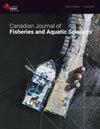劳伦斯五大湖微塑料污染管理策略——生态风险评估和管理(第2部分)
IF 2.2
2区 农林科学
Q2 FISHERIES
Canadian Journal of Fisheries and Aquatic Sciences
Pub Date : 2023-07-10
DOI:10.1139/cjfas-2023-0023
引用次数: 0
摘要
劳伦森五大湖盆地的塑料污染已经被记录在案。在这里,我们通过将拟议的风险阈值与大湖地区的监测数据进行比较,展示了水生环境中微塑料生态风险评估和管理框架的应用。我们的研究结果表明,在目前浓度相对较高的五大湖部分地区,微塑料对水生群落可能存在可测量的风险。例如,在整个区域收集的地表水样本中,89%超过了建议的食物稀释毒性风险阈值。然而,所有沉积物样本仍低于建议的风险阈值。因此,必要和适当的下一步可能包括召集一个由当地专家组成的工作组,为该地区制定生态风险评估和管理框架,包括地表水和沉积物中微塑料的关注阈值。最终,微塑料污染应该在《五大湖水质协议》中得到解决,以确保加拿大和美国政府采取协调和持续的努力,减少微塑料的释放和影响。本文章由计算机程序翻译,如有差异,请以英文原文为准。
Towards a management strategy for microplastic pollution in the Laurentian Great Lakes – Ecological risk assessment and management (Part 2)
Plastic pollution has been documented across the Laurentian Great Lakes basin. Here, we demonstrate the application of a published ecological risk assessment and management framework for microplastics in aquatic environments by comparing proposed thresholds for risk to monitoring data from the Great Lakes region. Our results suggest that there may be measurable risks from microplastics to aquatic communities in parts of the Great Lakes where current concentrations are relatively high. For example, 89% of surface water samples collected across the region exceed the proposed risk thresholds for food dilution toxicity. However, all sediment samples remain below the proposed risk thresholds. Accordingly, a necessary and appropriate next step may include convening a workgroup of local experts to develop ecological risk assessment and management frameworks for the region comprising thresholds of concern for microplastics in surface water and sediment. Ultimately, microplastic pollution should be addressed in the Great Lakes Water Quality Agreement to ensure coordinated and sustained efforts are taken by the governments of Canada and the United States to reduce their release and impact.
求助全文
通过发布文献求助,成功后即可免费获取论文全文。
去求助
来源期刊

Canadian Journal of Fisheries and Aquatic Sciences
农林科学-海洋与淡水生物学
CiteScore
4.60
自引率
12.50%
发文量
148
审稿时长
6-16 weeks
期刊介绍:
The Canadian Journal of Fisheries and Aquatic Sciences is the primary publishing vehicle for the multidisciplinary field of aquatic sciences. It publishes perspectives (syntheses, critiques, and re-evaluations), discussions (comments and replies), articles, and rapid communications, relating to current research on -omics, cells, organisms, populations, ecosystems, or processes that affect aquatic systems. The journal seeks to amplify, modify, question, or redirect accumulated knowledge in the field of fisheries and aquatic science.
 求助内容:
求助内容: 应助结果提醒方式:
应助结果提醒方式:


